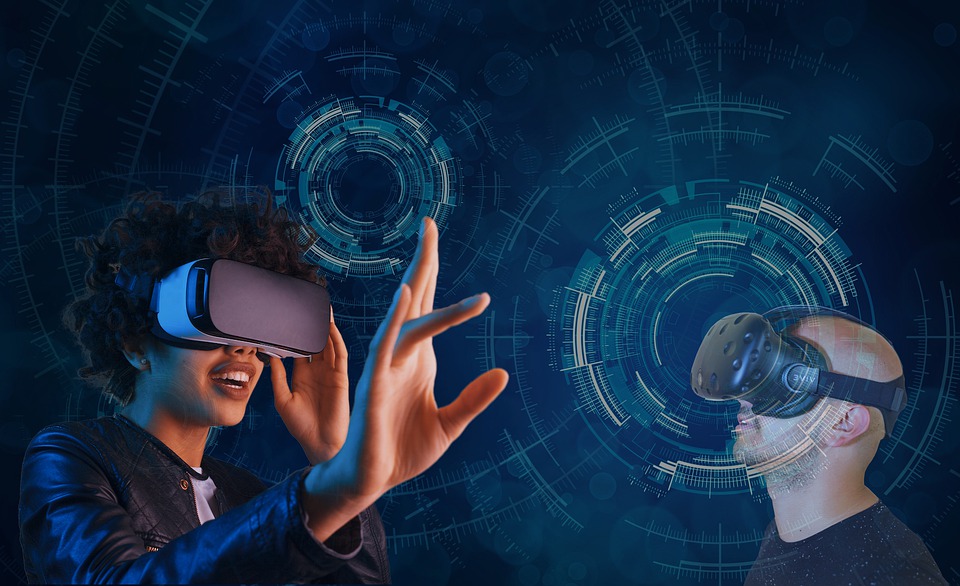The metaverse has the potential to change many things, including the way in which we design and test electronic systems.
The way in which automotive and aerospace businesses, enterprises, and industry leaders utilize technology for everyday tasks is set to undergo one of the most drastic evolutions ever. Just a few short years ago at the time of this writing, it was all but impossible to conceive of any sort of technology could have a greater impact than networked computers, the internet, or even mobile computing. Now, however, the immersive mixed reality powering the metaverse is challenging just that for all these industries, and more.
What is mixed reality?
There are so many different “realities” these days that it’s easy to get confused, so a brief overview is as follows. Physical reality (PR) refers to the real world we see around us. At the other end of the spectrum, we find virtual reality (VR) in which the reality is completely generated by a computer. In addition to education and entertainment, VR has tremendous application in industry for training, such as teaching crane operators how to manipulate heavy loads in adverse conditions.
Augmented reality (AR) refers to an interactive experience of a real-world PR environment in which the objects that reside in the real world are enhanced by computer-generated perceptual information, sometimes across multiple sensory modalities, including visual (with text and/or images and graphics), auditory, haptic, somatosensory, and olfactory.
In fact, AR is only one side of the coin, because we also have diminished reality (DR), which is also known as deleted reality, and which is the complement of AR. As opposed to adding information or stimuli to a real-world scene, DR involves removing or diminishing information or stimuli from the real world. Examples would be to fade down (or out) extraneous voices or other sounds when you are conversing with someone in a noisy environment, fading or blurring portions of the scene you are viewing, or completely removing objects or people from the reality with which you are engaging.
And there’s also augmented virtuality (AV). As opposed to AR, in which objects and scenes in the real world are augmented with computer-generated information, AV refers to augmenting virtual environments with real-world objects or people.
Mixed Reality (MR) refers to merging of all types of real and virtual worlds—PR, AR, DR, AV, and VR—to produce new environments and visualizations, where physical and digital objects co-exist and interact in real time. Mixed reality does not exclusively take place in either the physical or virtual world but is a hybrid of reality and virtual reality. All of this can be visualized as a reality-virtuality continuum spanning 100% physical reality at one end of the spectrum and 100% virtual reality at the other end.
What is the metaverse?
Published in 1992, Snow Crash is a science fiction novel by the American writer Neal Stephenson. Like many of Stephenson’s novels, it covers history, linguistics, anthropology, archaeology, religion, computer science, politics, cryptography, memetics, and philosophy.
The term “metaverse” has its origins in Snow Crash as a portmanteau of “meta” and “universe.” Originating from the Greek meaning “after” or “beyond,” meta is also used to mean “more comprehensive” or “transcending” when used as a prefix. (Although “Metaverse” is always initial capitalized in Stephenson’s fiction, the lowercase “metaverse” is more commonly used by everyone else except at the beginning of a sentence.)
For the purposes of our discussions here, the metaverse is understood to be a universal mixed reality world that is facilitated by the use of virtual and augmented reality headsets.
How will companies leverage digital twins?
A “digital twin” is a virtual representation that serves as the real-time digital counterpart of a physical person, object, process, or system. Today’s IT leaders are building metaverses—knowledge workers and things being represented by digital twins—virtual worlds where people, consumers, workers, all gather to communicate, collaborate, and share through a virtual presence on any device. For example, automotive and aerospace companies will build immersive virtual spaces, a.k.a. metaverses, that will allow employees to virtually collaborate using their digital twin through chats, emails, video calls, and even face-to-face meetings.
Well-known companies like Microsoft, Accenture, and Facebook, which itself is now called Meta, are all paving the way toward this new reality of business, but there are companies working behind the scenes building immersive reality, modeling, and simulation technologies that will ultimately power these new metaverses
What can companies do with metaverses?
Microsoft, in particular, believes that individuals will engage with one another in an immersive experience once they can co-exist in a virtual setting where they exist as avatars, perhaps even one day as holograms. The company expects people to access virtual settings from its Mesh for Teams application through mixed-reality headsets like HoloLens, as well as everyday smartphones and laptops.
In one of the earlier enterprise-level buildouts, Accenture has been developing a “virtual campus” where its employees meet for coffee, parties, presentations, and other virtual events. The company also leverages this virtual meeting space when onboarding new employees so they can build their own virtual (digital) twins.
Modelling is at the center of powering the metaverse
In these metaverses, digital twins based on modeling and simulation play a leading role. Simulation allows automotive and aerospace design teams to take copies of the digital twins of their creations, run simulations on them, and then identify optimizations that are too complex to find by monitoring the physical environment alone.
The power of simulation will be a game-changer for enterprises and businesses throughout the metaverse in a variety of industries, such as optimizing production planning in the automotive sector, accelerating design in the aerospace industry, improving overall production efficiency for manufacturers, and increasing accuracy for consumer-packaged goods companies. Many companies are poised to leverage virtual simulation to make better business decisions and generate the greatest return on investment.
Optimum immersive reality systems are needed to support ultra-realistic, high-fidelity digital twin visuals during the modeling and simulation process; precise fusion of the virtual-on-real-world in a multi-platform environment and the ability to demonstrate a variety of realistic environments.
A new kind of application that is enabled by tight integration between real and virtual worlds, the metaverse is facilitated by multitude of new technologies broadly in five groups as shown below:
- Communications and computing infrastructure: The metaverse will need to perform large-scale, compute-heavy tasks and access large databases to merge the real and virtual worlds.
- Management technology: The metaverse will need a lot of resources like energy, compute, etc. This layer manages and allocates the most optimal resources required to run the metaverse.
- Fundamental common technologies: Artificial intelligence (AI) and spatio-temporal consistency are fundamental common technologies required for the metaverse.
- Virtual reality object connection: The metaverse will create 1:1 connections between real and virtual world objects and technologies like blockchain, and identity modeling will enable this.
- Virtual reality space convergence: The metaverse will fundamentally need a new medium to interact. PR (PR, AR, DR, AV, and VR), brain-computer interfaces (BCIs), and gaming technologies will enable this.
Immersive reality solution providers offer a variety of fundamental and foundational technologies required to run industrial enterprise metaverses, including virtual reality space convergence, communications and computing infrastructure, and security and privacy.

Virtual reality space convergence
Ultra-low latency high fidelity rendering: Low latency is extremely critical to provide an immersive experience in a metaverse. AR/VR partners provide unparalleled realism of environments by leveraging ultra-low latency remote rendering on cloud/on premise in full fidelity and wirelessly streaming the solution to affordable commercial-off-the-shelf (COTS) devices in the form of head-mounted displays (HMDs), tablets, and desktop computers.
High-precision 3D AI-based spatial mapping: Uses high-fidelity remote spatial mapping with high-fidelity 3D scene reconstruction, scene segmentation, and 3D object recognition using 3D vision and deep learning-based AI with precise fusion of the real and virtual worlds to merge the real world and virtual worlds.
Game engines: Consumer game engines have limitations in that they can handle only a metaverse that can fit in a single server. The metaverse will be ever-growing as more digital twins are created to simulate real objects in the virtual world. The right AR/VR partners have created a data-centric simulation engine that scales for any complexity of metaverse.
Communications and computing infrastructure
Cloud computing/edge computing: Industrial enterprises will subscribe to multi-cloud, edge cloud. Depending on different factors like data sensitivity, latency, and cost, different parts of the metaverse need to be run at different cloud/edge locations in a distributed manner. AR/VR partners automate running the metaverse for industrial enterprise.
Messaging framework: In a distributed metaverse there is a need to update the metaverse at global scale so users can collaborate seamlessly. AR/VR partners have messaging framework updates distributed to the metaverse at global scale.
Security and privacy
Security and privacy are among the biggest issues facing today’s world. Since the metaverse has digital twins as an integral part, it will have much richer data. Security and privacy in the metaverse cannot be solved by traditional security tools, so AR/VR partners have built tools that handle the security and privacy related to digital twins.
Conclusion
The metaverse is going to be important for all businesses, enterprises, and consumers. Today, people and employees can only experience the internet when they log online using their computer or mobile device, but with new connectivity, devices, and technologies powered by immersive mixed reality, we will be able to experience the internet all around every single day.

